How to Call a Blocked Number on iPhone: Step-by-Step Guide
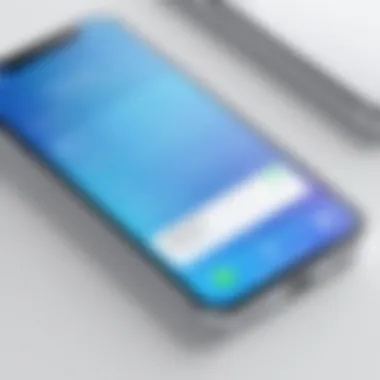
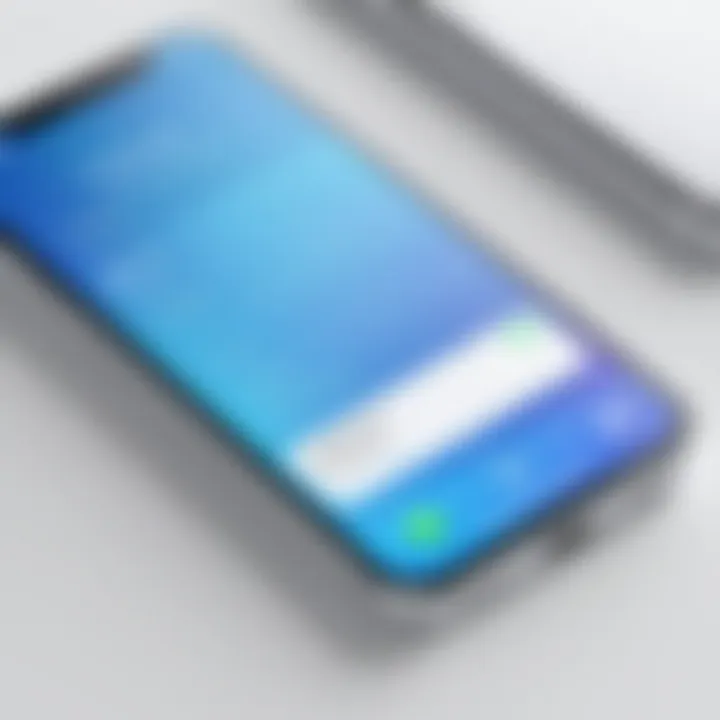
Intro
Navigating the intricate landscape of smartphone functionalities can be challenging. iPhones, known for their robust features, provide users with the ability to block unwanted calls. However, there are instances where users may require calling a previously blocked number. This article not only outlines the processes involved in calling a blocked number but also delves into privacy implications and user experiences.
Understanding how to manage contacts on your device is vital for effective communication. Whether it is a matter of a business call or a personal connection, knowing how to navigate the blocking and unblocking features can enhance your usability and control over your smartphone interactions.
Key Features
Implications of Blocking Contacts
Blocking a contact on an iPhone means that any calls, messages, or FaceTime requests from that person will not reach you. This is useful in avoiding telemarketers, spam, or unsolicited communication. However, it also creates a situation where the sender remains unaware of this action. When you choose to call a blocked number, understanding the implications surrounding both parties is critical.
Technical Mechanisms of Unblocking
To call a blocked number, one must first understand how to unblock it. This process can seem straightforward but carries technical steps that require attention. The iPhone operates on a user interface designed to handle such actions seamlessly, making it important for users to be familiar with their device's settings.
Step-by-Step Procedures
- Open the Settings App
Navigate to the home screen and tap on the Settings app to access your device settings. - Scroll to Phone
In the settings menu, scroll down and select the "Phone" option to get to calling settings. - Blocked Contacts
Tap on "Blocked Contacts" to view the list of contacts you have previously blocked. - Unblock the Number
Locate the number you wish to unblock, and swipe left on the contact. Then, tap "Unblock". - Call the Number
After unblocking, you can now call the number by either dialing it directly or selecting it from your contacts.
Privacy Concerns
Unblocking a contact raises certain privacy issues. Once unblocked, there is potential for unwanted communication to resume. Users must weigh the necessity of making that call against the possibility of re-engaging with an unwanted contact.
When you unblock a number, the contact can attempt to reach you again, which could lead to discomfort or unwanted interactions.
User Experiences
Feedback from users regarding this feature often varies. Some appreciate the ability to regain communication, while others find themselves reconsidering their blocking decisions due to unwanted replications of past interactions. Careful consideration can prevent potential stress in such situations.
The End
Understanding the dynamics of blocked numbers on an iPhone is essential. This guide provides a clear path to manage your contacts effectively. Users should remain vigilant about the implications of unblocking a number, ensuring that it aligns with their communication needs and privacy preferences. By following the outlined procedures, calling a blocked number can become an efficient process.
Understanding Blocked Numbers
Understanding the implications of blocked numbers is essential for anyone using an iPhone. This topic not only covers the technical aspects but also delves into personal privacy and communication dynamics. Knowing what it means to block a number can help users navigate their contact lists and understand the significance of their choices.
When you block a number, it signifies a deliberate action to prevent unwanted communications. This can lead to a more peaceful interaction by reducing disturbances from specific contacts. However, it also raises questions on the boundaries of digital communication and the potential for miscommunication toward relationships.
An important consideration is that blocking a number does not erase it from your contact list. Users should remain aware that blocked numbers will still remain visible, potentially leading to confusion for the person who has been blocked. Overall, grasping the fundamentals of blocked numbers is crucial, as it impacts both privacy and interaction.
What Does Blocking Mean?
Blocking a number on iPhone is a feature designed to enhance user control over their communication. When a number is blocked, calls, text messages, and FaceTime attempts from that number will not reach the user. Essentially, it prevents any form of communication from the blocked number without alerting the caller that they have been blocked. This functionality is particularly beneficial in managing spam or unwanted calls, providing a necessary barrier for users looking to maintain their privacy.
Impacts of Blocking a Number
The decision to block a number carries several impacts that users should consider. First, it affects the blocked person’s ability to make contact, which may strain personal relationships. For instance, a friend or family member might be unaware that they have been blocked, leading to misunderstandings. Even if one intends to block only unwelcome communications, it is crucial to weigh the potential social ramifications.
Further, blocking a number can also impact the user’s mental well-being. While it can certainly reduce stress from unwanted interactions, it may lead to feelings of discomfort or guilt about severing lines of communication. Understanding these impacts can prepare users for the consequences of their actions, making it easier to navigate future decisions around blocking numbers.
Reasons for Blocking a Number
Blocking a number is a significant feature for many smartphone users, particularly on platforms like iOS. This section elaborates on why individuals opt to block numbers and the implications that come with this decision. Being aware of these reasons not only aids in understanding the user's perspective but also sheds light on the larger discussions surrounding privacy and unwanted communications in digital spaces.
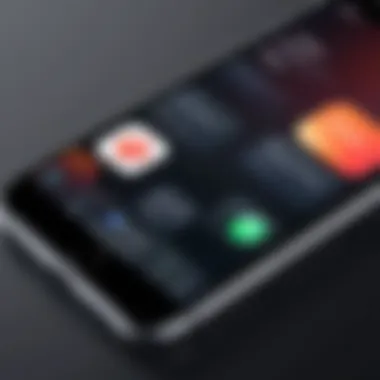
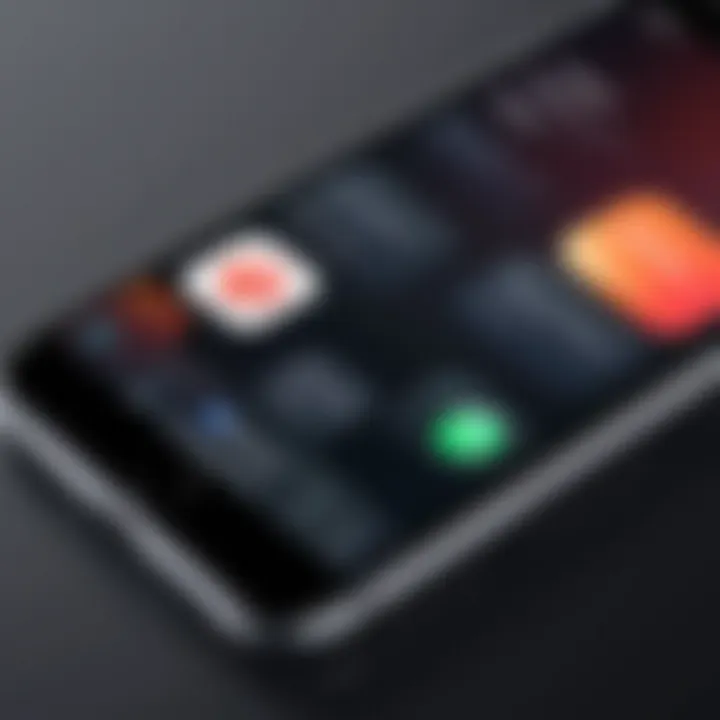
Personal Privacy Concerns
The foremost reason many individuals choose to block a number stems from personal privacy. In our increasingly connected world, safeguarding personal information becomes a key concern. Users may experience unwanted calls or messages from individuals known to them but who no longer respect boundaries, or they may encounter relentless marketing calls. Blocking such numbers allows users to reclaim their privacy and ensures that their personal space is respected.
When someone blocks a number, they create a barrier against potential harassment or invasion of privacy. This action affords users the peace of mind that their devices will not be inundated by unwanted communications. Blocking numbers fosters an environment where individuals can control who has access to them, promoting a healthier relationship with technology.
Spam and Unwanted Calls
Spam and unsolicited calls have become pervasive issues for mobile phone users. Organizations that engage in telemarketing often employ aggressive tactics to reach potential customers, leading to an overwhelming barrage of calls. Even social contacts can become nuisances if they continually attempt to communicate in ways that are unwelcome.
Many users have found that blocking numbers significantly reduces the frequency of these interruptions. By eliminating unwanted calls, users can focus on essential communications without the distraction of spam. With options for reporting spam calls readily available, blocking, therefore, offers not only individual relief but also contributes to broader efforts to reduce spam in phone systems.
"Blocking numbers can be an empowering tool for maintaining control over your interactions, allowing for more intentional connections."
How to Unblock a Number
Understanding how to unblock a number on your iPhone is vital for maintaining communication. Whether a contact is blocked due to privacy concerns or uninvited telemarketing calls, unblocking allows a user to reconnect without inconveniences. This article segment provides insights into the process, ensuring that readers know the necessary steps and the implications that come with unblocking contacts.
Unblocking a number can not only help restore needed conversations but also assist in accessing important information that may have been missed. In today’s digital atmosphere, everyone values their privacy. Therefore, knowing when and why to unblock is essential for personal management of contacts.
Navigating iPhone Settings
To successfully unblock a number on your iPhone, you will need to navigate through the device's settings. This process is straightforward but requires careful attention to detail.
- Open the Settings app from the home screen of your iPhone.
- Scroll down and select Phone or Messages, depending on where the block was originally set.
- Within this section, look for the option labeled Blocked Contacts.
- Here, you will find a list of all numbers currently blocked.
- Locate the number you wish to unblock and swipe left on it to reveal the Unblock option.
- Tap Unblock, and the number will be removed from the blocked list.
This method not only reestablishes the connection, but ensures you stay in control of your contact list. Knowing how to locate and adjust these settings is an essential skill for managing your communication effectively.
Confirming the Unblock Process
After unblocking a number, it is prudent to confirm that the process took effect. Users may want to ensure that the contact is truly unblocked to prevent any further miscommunication.
- Go back into Settings and access Phone or Messages again.
- Navigate once more to Blocked Contacts.
- If the number you just unblocked is no longer shown in this list, it confirms that the contact is successfully unblocked.
Additionally, it can be beneficial to attempt a test call or send a message to the unblocked number. If communication goes through without issues, then the unblock process has been successful.
Confirming the unblock status ensures you remain informed. It prevents any confusion linked to previous blocks, banishing potential misunderstandings.
Remember, unblocking a number does not automatically imply the need to engage with it. This decision should be made based on your comfort level and circumstances. Keeping an updated understanding on communications helps in managing your contact list effectively.
Methods to Call a Blocked Number
Understanding how to call a blocked number on an iPhone can provide users with alternative solutions when communication lines have been restricted. Many users find themselves in situations where they must contact someone they had previously blocked, whether due to changing circumstances or the need to resolve a misunderstanding. This section outlines various methods available for reaching a blocked number, highlighting important considerations and the potential benefits associated with each method.
Using Facetime
Facetime can serve as a useful tool for calling a blocked number. Even if a number is blocked on voice calls, Facetime enables users to initiate video calls without the same restrictions. To do this, simply open the Facetime app, select the contact you wish to reach, and attempt to connect. It is important to keep in mind, however, that the recipient must also have the capability to use Facetime, which could limit the effectiveness of this method. If they do not, you may need to consider alternative options.
Utilizing a Different Phone
Using a different phone is one of the most straightforward yet effective methods to reach a blocked number. This can involve borrowing a friend's phone, using a landline, or even purchasing a prepaid phone. The key advantage here is that you bypass the block on your primary device. Additionally, if you choose to use this method, it is crucial to approach the other party thoughtfully. Informing them about your intention to speak matters significantly. Keep in mind the potential for awkwardness or conflict.
Calling from Another App
Some applications allow users to bypass native blocking features by providing alternative means of communication. Apps such as WhatsApp, Signal, or even social media platforms like Facebook Messenger present valuable opportunities to connect. Generally, these applications do not rely on the traditional telecom service. To use any of these apps, simply open the desired application, find the contact, and initiate a call or message. This method can prove effective, especially if you are already connected with the individual on these platforms. However, this method does rely on both parties having the same application, and it is important to note that privacy and security standards may vary across different apps.
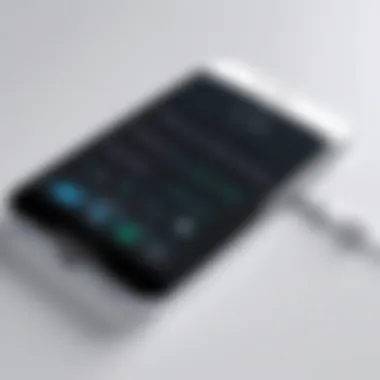
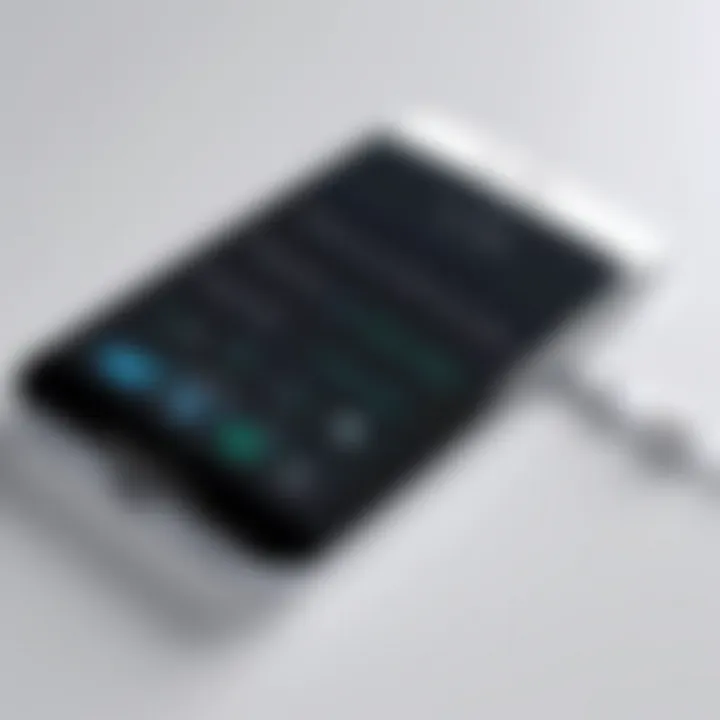
Always consider the implications of reaching out to blocked contacts. Assess the reasons for the initial blockage to ensure that your attempt at communication is respectful and warranted.
Technical Mechanisms of Blocking
Understanding the technical mechanisms behind blocking is crucial for anyone interested in managing their iPhone contacts efficiently. This knowledge aids users in comprehending how their device behaves when a number is blocked, and allows for better handling of unwanted calls. Moreover, it lays the foundation for exploring effective methods to call blocked numbers when necessary.
How Blocking Works on iOS
When a number is blocked on an iPhone, the device prevents that number from making calls and sending messages to the user. iOS utilizes a centralized list of blocked contacts, ensuring that these numbers are filtered out automatically. This blockage is largely based on system-level settings which prioritize user privacy and comfort.
A user initiates blocking from the settings menu or through the contact card. Once a number is added to the block list, it is effectively rendered silent.
Here are a few key points about how blocking operates on iOS:
- The blocked number receives no notification or indication that they have been blocked.
- Calls from the blocked number go directly to voicemail, if enabled.
- Messages sent from the blocked number are not delivered to the user.
- Notifications for calls or texts from blocked numbers do not appear.
This design choice underscores Apple’s commitment to ensuring a seamless user experience, allowing individuals to manage disruptions efficiently.
Implications for Data Usage
Blocking a number on an iPhone has clear implications for data usage. Once a number is blocked, the iPhone effectively does not process any data transactions for incoming messages or calls from that contact.
The primary benefits include:
- Reduced Data Consumption: By not engaging with unwanted calls or texts, users save on mobile data that would otherwise be incurred if those communications were allowed.
- Enhanced Functionality: The device can allocate resources elsewhere since it does not need to handle interactions with blocked contacts.
However, it’s essential to be aware that the act of blocking does not eliminate the underlying potential for data usage from other legitimate contacts. Users should remain vigilant about app permissions as certain applications can consume data regardless of contact status.
"Blocking does not equate to deleting contact data; it merely sets boundaries on interaction in a meaningful way."
Understanding these aspects equips users with the know-how to navigate their communication preferences with efficiency. The technical mechanisms of blocking on iOS not only promote a more streamlined and secure communication environment but also highlight the broader risks and responsibilities tied to managing digital interactions.
Consequences of Calling a Blocked Number
The act of calling a blocked number may seem straightforward at first glance, yet it carries considerable consequences that can affect not just the caller but also the recipient of the call. Understanding these implications is crucial, especially for tech-savvy individuals who may wish to navigate the complexities of their iPhone functionalities. The following sections will delve deeper into the potential miscommunications that may arise from such actions, as well as the legal ramifications that the caller might encounter.
Potential for Miscommunication
Calling a blocked number often leads to miscommunication issues. When a user blocks a number, it typically indicates a desire to cease communication. Attempting to contact this number again can be seen as disregard for that decision. Consequently, this might lead to confusion or heightened tension between the parties involved. The blocked contact may perceive the call as unwelcome and intrusive, potentially exacerbating any existing issues.
Moreover, in certain situations, if the blocked number attempts to contact the original caller through alternate methods—like text or instant messaging when the call fails—this might further complicate the situation. The perceived urgency or importance of the communication can blur lines, leading to misunderstandings. Given the advanced features of the iPhone, which allow various forms of contact, it becomes essential for users to be cautious about how and when to initiate contact with blocked numbers.
Legal Implications
Engaging in communications with a blocked number could also expose individuals to legal implications, depending on the context. In some jurisdictions, repeated attempts to contact a blocked number can be construed as harassment, particularly if the recipient has clearly expressed a desire not to be contacted. This legal aspect is particularly significant for businesses or professionals who may inadvertently violate communication laws when reaching out to clients or colleagues.
Furthermore, if the recipient decides to take legal action, the caller could face consequences ranging from fines to restraining orders, depending on the severity of the situation.
To navigate this landscape, it is recommended that individuals think critically about their intent and the potential consequences before making any call to a blocked contact. Understanding communication regulations in one's location can also provide additional clarity and guide users in avoiding legal pitfalls.
In summary, the consequences of calling a blocked number extend beyond mere inconvenience. They can lead to misunderstandings and legal repercussions, which necessitate careful consideration before proceeding.
User Experiences and Concerns
Understanding user experiences and concerns regarding calling a blocked number is essential in the context of this article. This section will outline common frustrations, valuable insights, and practical suggestions that emerge from real-life interactions with blocked numbers on iPhones. These experiences can illuminate the nuanced implications of blocking and provide clarity on how users can navigate this often frustrating situation.
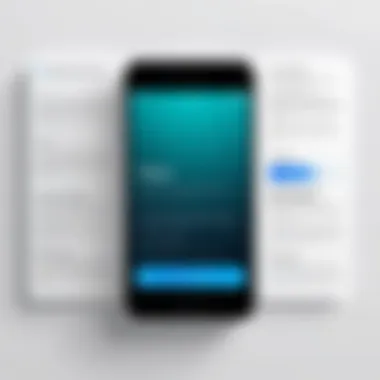
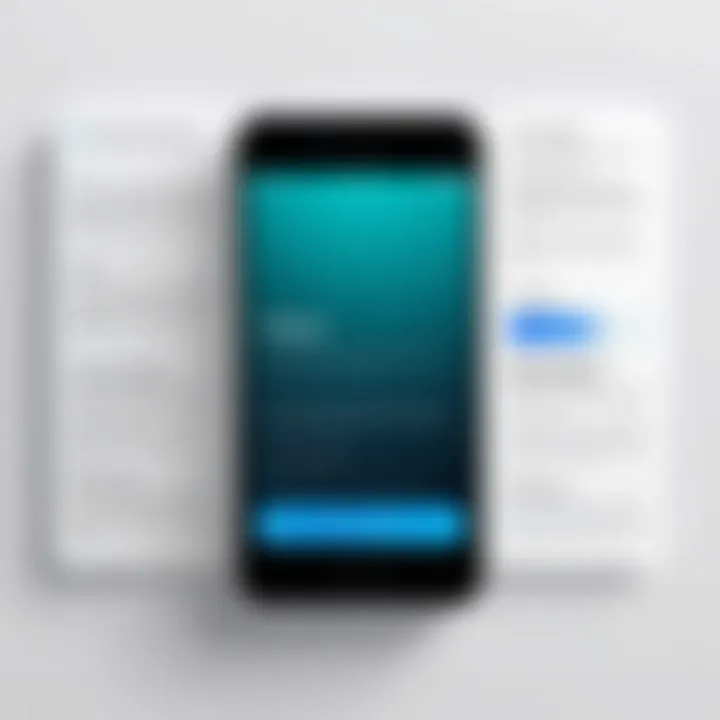
Common User Queries
From discussions in online forums and feedback from users, it’s clear that many individuals have similar queries when attempting to interact with blocked numbers. These questions often revolve around the mechanics of blocking, the repercussions of attempting to call blocked contacts, and whether such actions can be detected by the blocked party. Here are a few frequently asked questions that arise:
- Will the blocked number receive my call?
This is a key concern. When callers attempt to reach a blocked number, the iPhone typically routes the call to voicemail or indicates that the number is unreachable without notifying the blocked number. - Can the blocked contact still see my attempts?
Most users worry about whether their call attempts generate any notifications to the blocked party. Generally, no notifications are sent; however, the blocked number remains unaware of any calls made. - How does blocking affect messaging?
Many users are curious about whether calls using applications like WhatsApp or Messenger bypass the blocking function. These platforms often have separate blocking mechanisms from traditional phone calls.
Addressing these queries provides users with a better understanding of the limitations of blocking features and the potential repercussions of adjusting these settings.
Privacy Considerations
Privacy is a significant concern for users considering calling a blocked number. Users often feel worried about unresolved conflicts or unwanted attention that may arise from trying to reach blocked contacts. This includes:
- Invasion of Privacy
Attempting to call a blocked number can be perceived as intrusive. Users should consider the feelings of the other party. Ghosting a conversation intentionally invites a level of uncomfortableness that can be harmful. - Legal Implications
In certain scenarios, especially in the case of harassment or legal restrictions, reaching out to a blocked number could inadvertently lead to complications. Users must be aware of the laws surrounding communication to avoid crossing boundaries that could have legal ramifications. - Platform-Specific Concerns
Each communication platform has its privacy policies. Users should familiarize themselves with individual app settings and guidelines to protect their privacy further.
Alternatives to Unblocking
In some situations, permanently unblocking a number may not be the best course of action. Users might prefer to maintain their privacy while still needing to communicate with a blocked contact. This section highlights alternative methods for reaching out to a blocked number on an iPhone. Understanding these alternatives is crucial as it allows individuals to strike a balance between personal boundaries and necessary communication.
Using Third-party Applications
A viable alternative to unblocking a number is utilizing third-party applications designed for communication. Applications like WhatsApp, Viber, or Signal provide platforms for users to interact without necessarily needing to contract standard phone services.
- Step-by-step guide:
- Download and install the chosen application from the App Store.
- Register or log in using your phone number.
- Search for the blocked contact within the app.
- Initiate messaging or calling through the app.
Third-party apps often have built-in privacy features that can further enrich user experience. They may also allow for interactons without the risk of unwanted calls on your primary phone number. However, both parties must have the same app installed.
Contacting Service Providers
If an individual requires communication with a blocked number and wishes to explore official paths, contacting service providers may yield solutions. Many mobile network operators can offer guidance on alternative communication methods while maintaining a level of privacy.
- Benefits of contacting service providers:
- Understanding specific provider policies.
- Exploring temporary solutions without unblocking.
- Obtaining advice on available tools specific to your situation.
In many cases, specialists from the support team can suggest suitable applications or methods that do not compromise user privacy. Reaching out to your service provider can open avenues for communication that keeps personal boundaries intact.
Using these alternatives allows one to maintain privacy and manage communication effectively without compromising security.
Best Practices for Managing Blocked Contacts
Managing blocked contacts on your iPhone is not merely about preventing unwanted communications; it requires a strategic approach to ensure your digital interactions align with your personal and professional life. Adopting best practices for managing blocked contacts provides clarity and control. These practices help avoid accidental communications and make it easier to maintain your peace of mind.
Keeping Your Contact List Updated
A cluttered contact list can lead to confusion. Regularly updating your contact list is vital. It helps in easily identifying numbers that you might consider blocking or unblocking. By keeping your contacts current, you can enhance your responsiveness and prevent potential mix-ups.
- Regular Review: Set a schedule to review your contact list. This can be monthly or quarterly, depending on your usage.
- Categorize Contacts: Use labels or groups to categorize your contacts. This aids in distinguishing between personal, work, and other numbers, simplifying the management process.
- Remove Obsolete Contacts: Eliminate contacts that no longer serve a purpose. This keeps your list manageable and focused on relevant connections.
This organized approach not only enhances communication efficiency but also reduces the likelihood of mistakenly unblocking numbers that are better left blocked.
Regularly Reviewing Blocked Numbers
Periodic reviews of blocked numbers are equally essential. As situations change, individuals or services you once found disruptive may no longer pose a concern. Conversely, new numbers may need to be added as you encounter unwanted communication.
- Assessing Relevance: Evaluate which numbers you have blocked. Some might have been blocked out of frustration rather than necessity. Others may no longer be applicable if the circumstances have changed.
- Document Changes: Keep track of the reasons for blocking specific numbers. This can provide clarity during your reviews.
- Reconsider Unblocking: Sometimes, unblocking is necessary for business or personal reasons. A review will allow you to make these decisions with careful consideration.
Regularly maintaining and refining your blocked contacts allows for improved management of your interactions without the unnecessary burden of unwanted communications.
Each of these practices contributes to a well-maintained approach toward handling communications on your iPhone. By implementing these strategies, users can optimize the way they manage relationships in their digital life.



